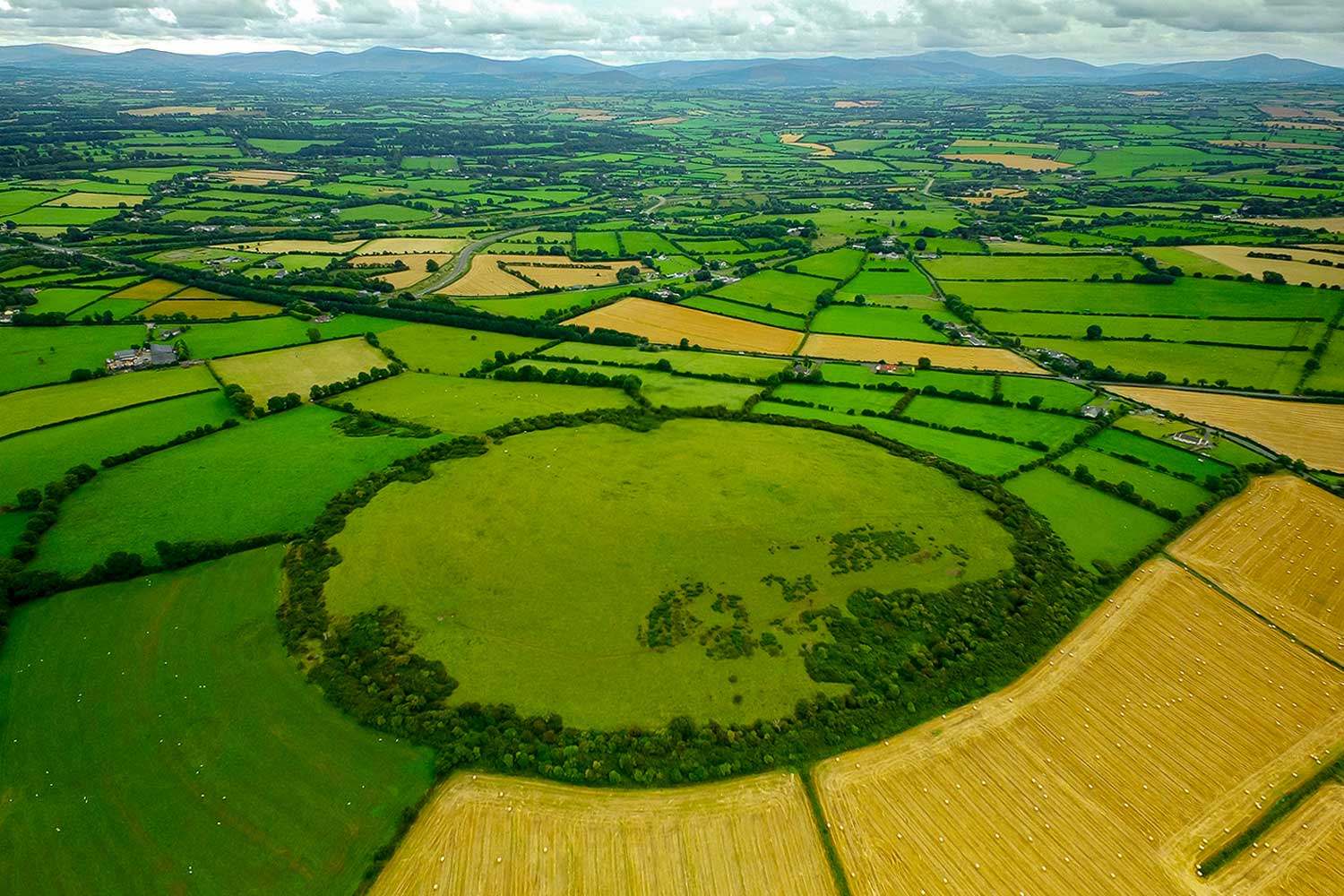Dún Ailinne was one of the great royal sites of early Gaelic Ireland and is believed to have been where the Kings of Leinster were inaugurated. It is a large circular enclosure covering most of the hilltop; about 13 hectares, ringed by an earth bank and ditch (or "henge"). As with most henges, the ditch is on the inside, meaning that it was likely to have been symbolic rather than defensive. Archeological investigations show that there were once circular timber structures (or rings of upright timbers) inside the enclosure. Today you will see some very large boulders on the summit which may be parts of an original standing stone called 'The Ail' after which the Dún Ailinne got its name, and which appears to have been deliberately destroyed, possibly during the early Christian period in Ireland.
Indications of earliest use are from the Neolithic period, but the main activity there was during the Iron Age. It does not seem to have been dwelt in all year round but was instead mostly used for ceremonial activities and rituals. It seems to have been occupied during the Spring/Summer months and excavations revealed evidence of cooking, including large amounts of bones from cows, sheep, pigs, deer and horses. A La Téne style sword and Roman bronze fibulae were also found at the site. Dún Ailinne was mostly abandoned about the time the nearby Christian settlement at Old Kilcullen was established in the 6th Century.
According to one legend, Dún Ailinnegot its name when Aillenn, a daughter of Lugaid, king of Leinster was abducted and died of shame at her captivity. On hearing that she had died, her lover Baile also dropped dead. Through Aillenn's grave grew an apple tree, and through the grave of her lover, grew a yew. After seven years, the trees were cut down and made into 'poet's tablets' upon which were written the visions, espousals, loves, and courtships of Leinster. When the 2 tablets were brought to the court of the king, according to legend, they sprang together and could not be pulled apart. Another verse in the Dindsenchas (Lore of Places) mentions how Dún Ailinne was named after a huge standing stone, called 'The Ail' which was thrown by a giant named Buirech and landed upright on a mound, inside the henge.













